Cinque Terre, Italy
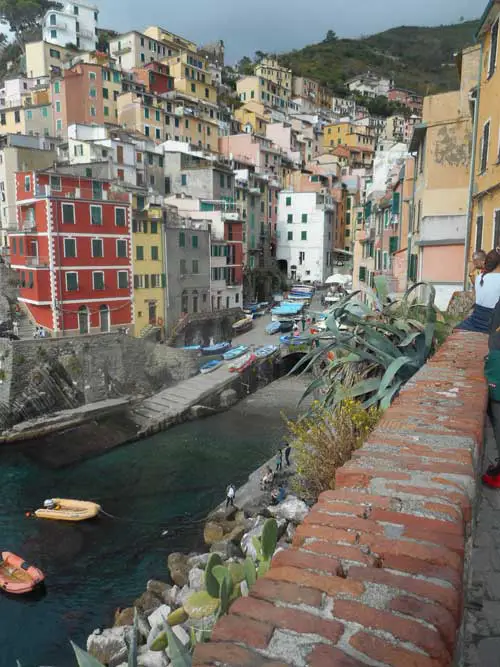
Cinque Terre is the name given to five stunningly picturesque villages which have clung for centuries to the rugged cliffs of northern Italy’s Mediterannean coast. The villages are intensely popular, so these tiny towns are often full to overflowing with visitors. Still, there is no place quite like them, and with a little advance planning a visit can be just fine. The hike between the five villages is one of the big draws, as are the beaches along that part of the Ligurian Coast, but do not miss the other reasons to visit.
The Cinque Terre is famous for its dessert wine, called sciacchetra, and its anchovies. If you like, you can have anchovies in just about anything – including spaghetti sauce – and they are often whole. These are not the tiny salty fish you are used to, so give them a try.
It is getting to be nearly impossible to visit the Cinque Terre when it’s not crowded. You could go in the middle of winter, but the weather might keep you indoors, and the primary attraction of the area is the hike along the cliffs from village to village. As long as you’re aware that the area is almost always fuller than you might expect it to be, you should be prepared for whatever you find. And if you’ve already done the hike and are looking for a picturesque place to relax in Feburary, you might find the perfect room in the Cinque Terre when it’s not completely overrun.
Rail Travel Times:
Paris to Milan: 10 hrs 39 mins
Milan to La Spezia: 3 hrs 7 mins: 4 hours
Genoa to La Spezia: 1 hr (booking required); 1 hr 26 mins
Florence to La Spezia: 2 hrs (booking required); 2 hrs 24 mins
Plan and Book:



Cinque Terre: See and Do
Cinque Terre (pronounced Chink-we Terra), which literally translates into English as “Five Lands” refers to five towns on the mountainous Liguria coast, which is between Genoa and La Spezia on Italy’s western seaboard. The five towns of medieval origin remained isolated and conserved their characteristics up until the first half of the 20th century when new access roads were opened up. Today, visitors flock here from around the world and are fascinated by the way human activities have been sculpted into the dramatic natural landscape.
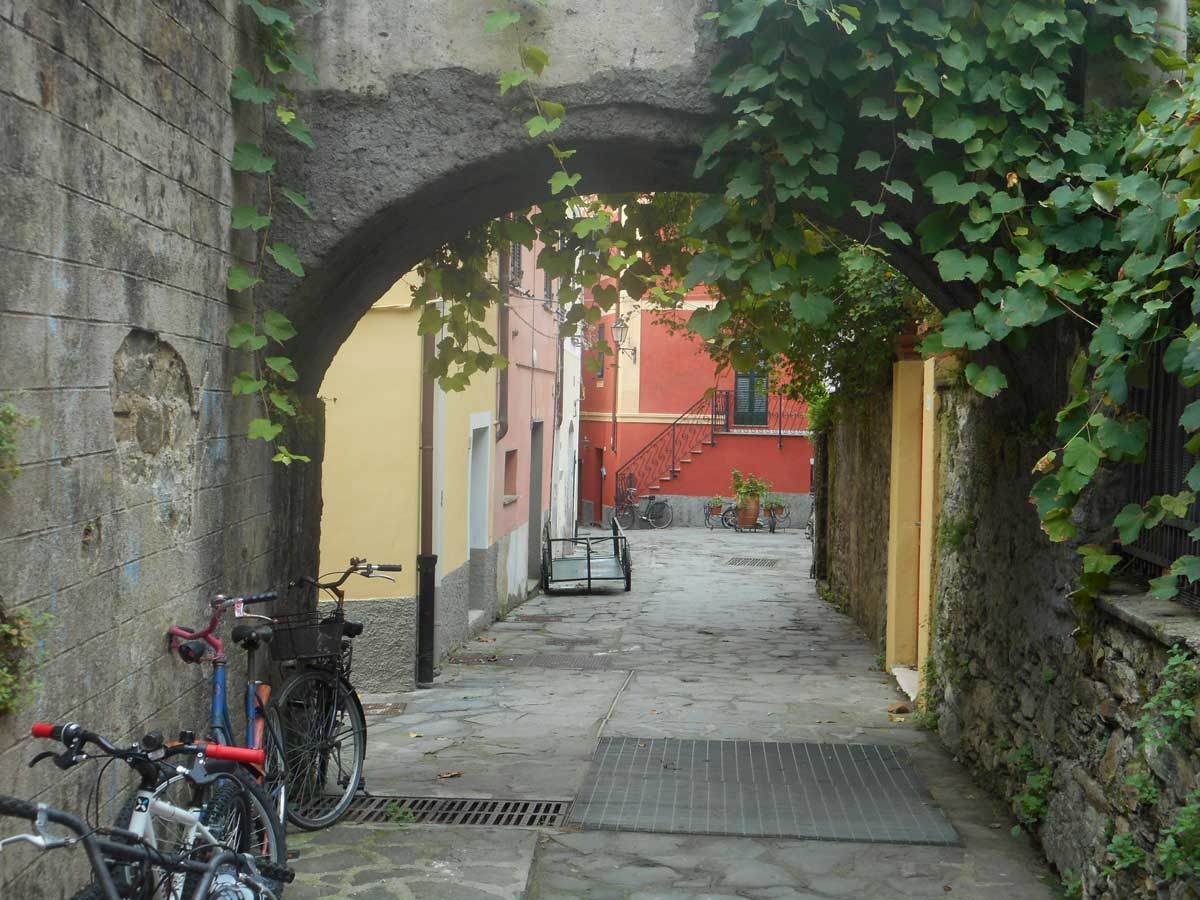
Fishing and farming have been the predominant industries for centuries, the latter being made possible by extensively modelling the landscape. Grapes, lemons and olives are still grown on the hillsides, the vines and trees clinging precariously to the steep slopes above the towns.
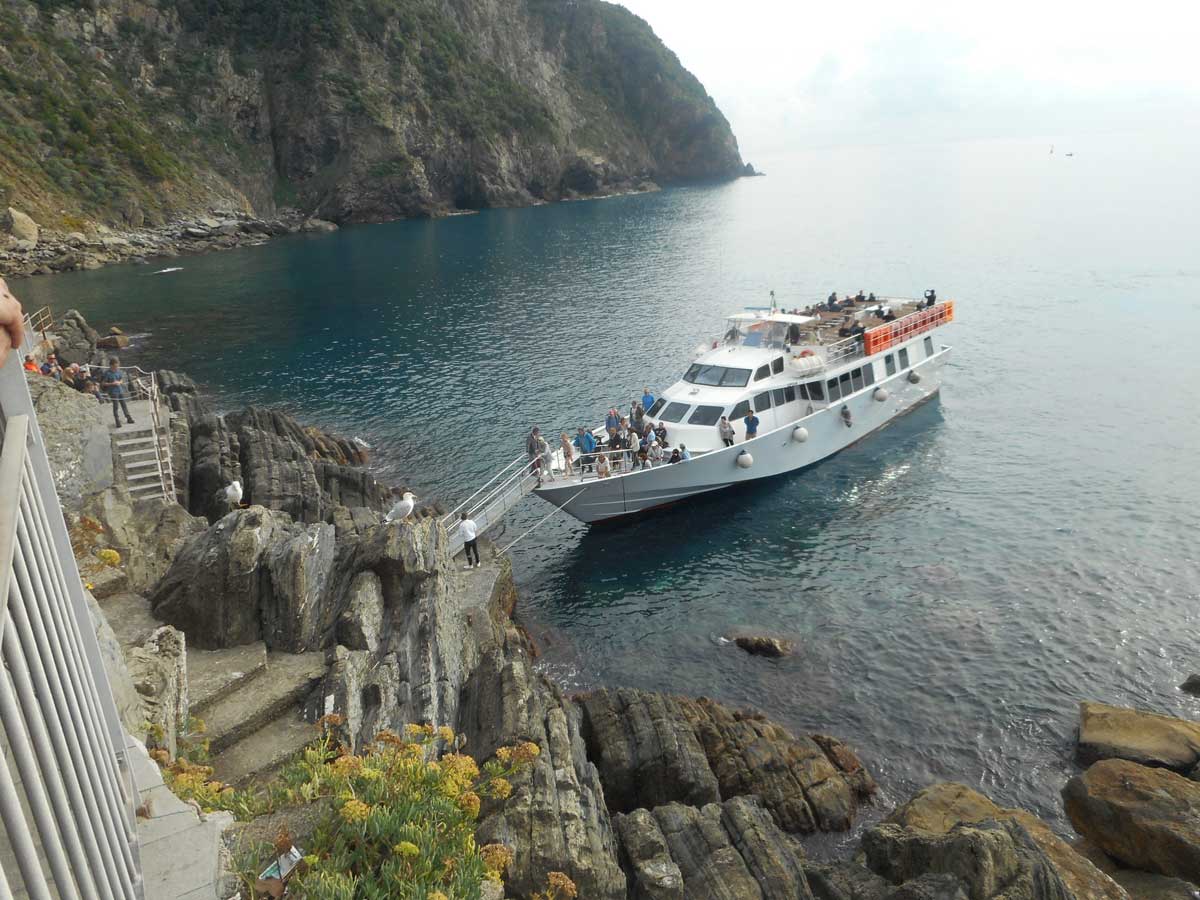
There are three ways to explore this stretch of coast – walking, by train or by boat. If arriving by train, you can get a 16 euro rail ticket that allows you to go up and down between the towns and La Spezia for a day. A similar deal is available from small boat operators who run ferry services between La Spezia and the five towns. Trains pass through in each direction, ferries arrive and depart once an hour. If you have a Eurail passes, travel to Cinque Terre on Italy’s regional railways is included.
The number one thing people who visit the Cinque Terre are there to do is hike – there are fantastic hiking trails that connect all five towns, mostly right along the cliffs. There are also less-famous hikes higher up in the hills above the Cinque Terre, if you’re staying for a few days and want to get away from the crowds hiking the main trails.
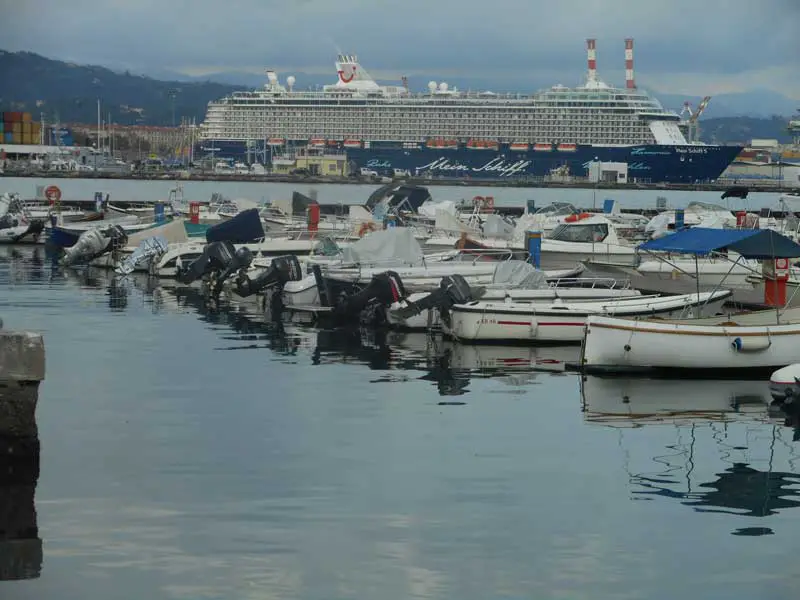
La Spezia
Visitors to Cinque Terre have a choice of accommodation, though many choose to stay in La Spezia, the major port for the region, and travel to and from the towns by train. They are not far from La Spezia, but to get to them, the trains pass through a series of tunnels, coming out into the open air only for the stations servicing the five towns. As one could imagine, accommodation in the towns is limited. La Spezia has become a regular stopping place for Mediterranean cruise ships, and on each of the three days we were in the area, there was a different ship tied up at the Passenger Terminal. Busloads of cruise ship passengers arrive in the early morning at La Spezia railway station for a day’s outing to Cinque Terre, ensuring the towns are always full to overflowing with tourists during the summer and cruising season, which extends from April to November.
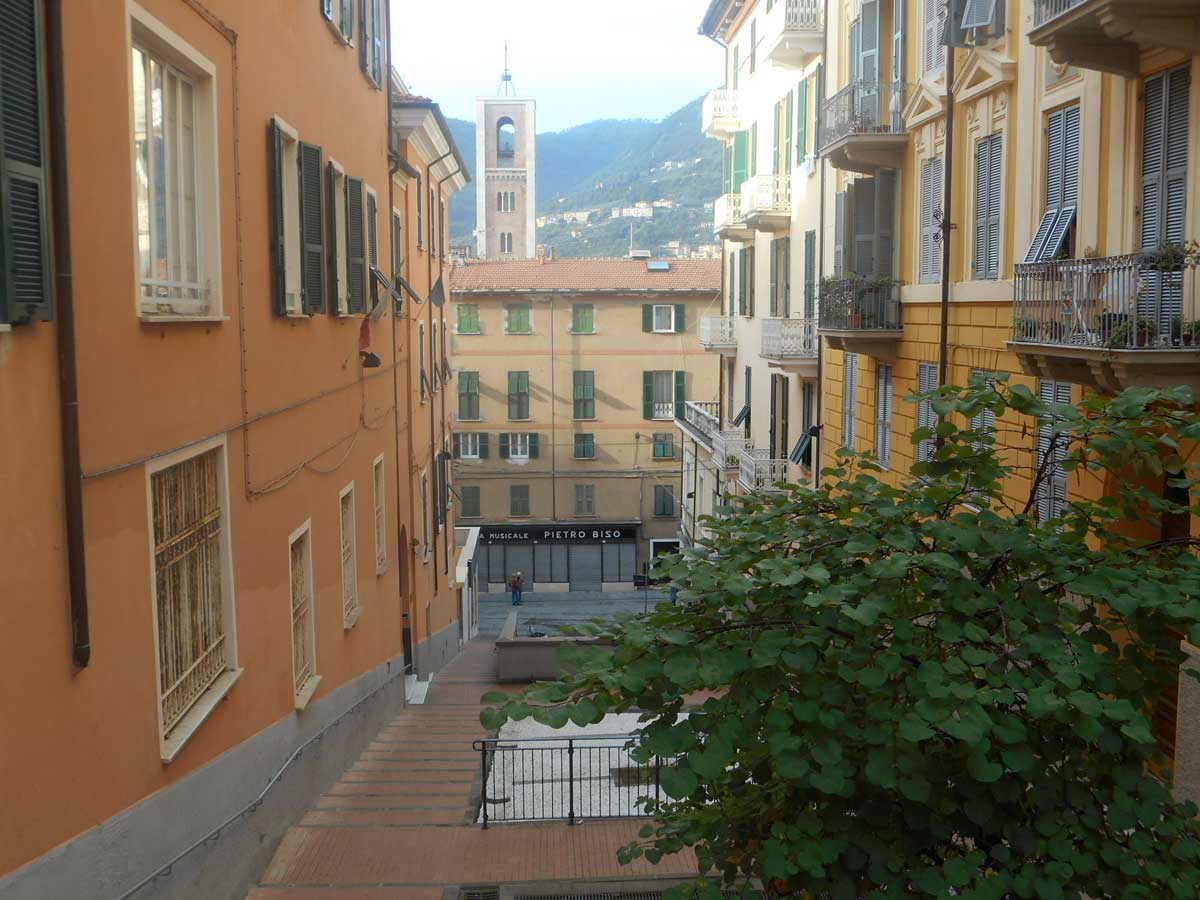
La Spezia, at the head of the Gulf of La Spezia, is the second city in the Liguria region, preceded just by Genoa. Though built on the coast, the narrow strip of land at ocean level has never been wide enough to contain the town, and many of its streets climb the hillside behind the town centre. These winding streets follow the contours of the landscape and offer a chance to see a variety of buildings and architectural styles away from the more crowded inner city streets.
La Spezia is one of the main Italian military and commercial harbours and hosts the arsenal of the Italian Navy. It is important for its museums, for the Palio del Golfo, and for the railway and boat links with Cinque Terre.
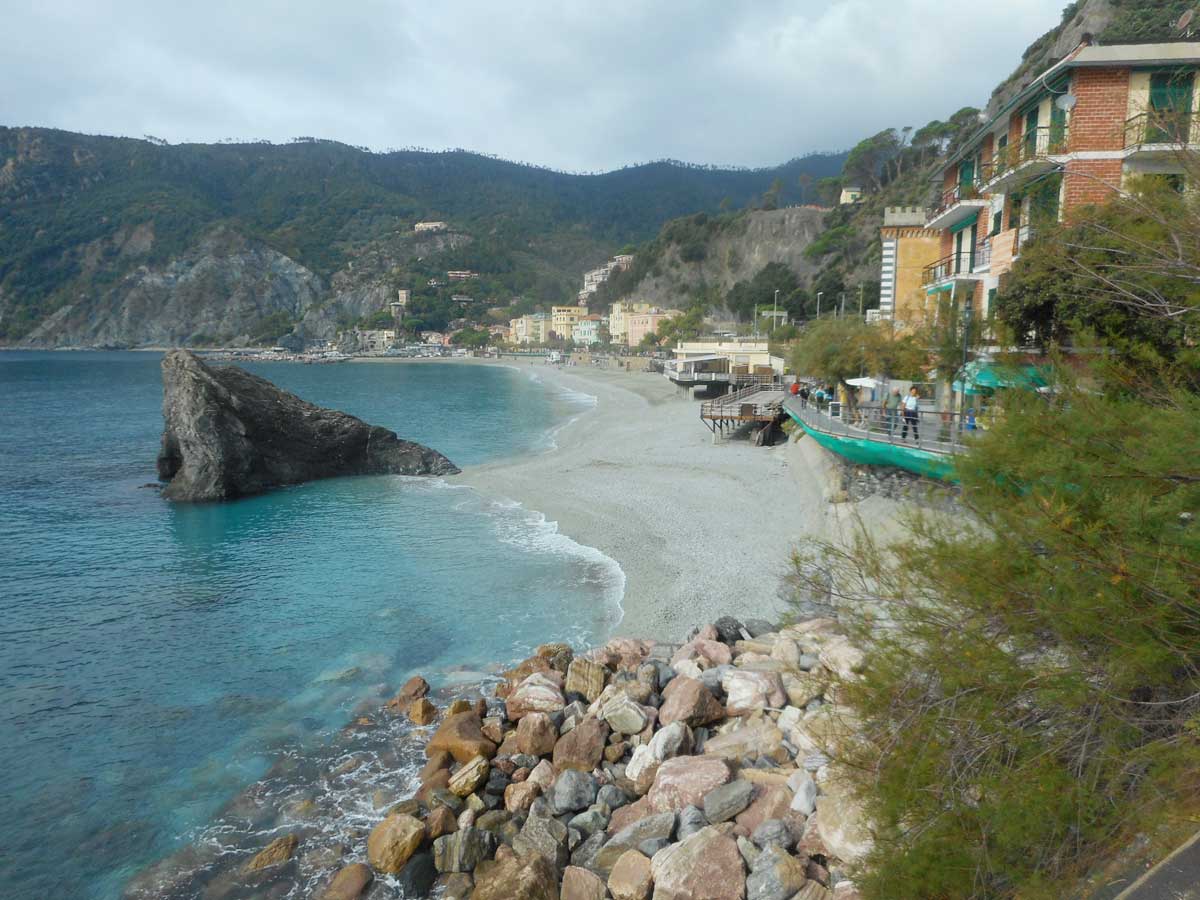
Monterosso al Mare
Once on the train and you leave the station you are into a tunnel and within five minutes you emerge at the first town – Riomaggiore. Most visitors arriving from La Spezia begin at the last town, Monterosso, and work their way back for no other reason than because it seems like a good idea. Whilst very similar in size and style, each town has its individual characteristics that make them unique.
Crystalline water, plentiful restaurants and small hotels and the area’s only sandy beach make Monterosso al Mare the most resort-oriented stop of the Cinque Terre. Day beds and umbrellas are available for rent on the crowded strand, popular with both tourists and locals, especially midsummer. One of Monerosso’s landmarks is the beautiful boardwalk that runs along the Ligurian Sea. Visitors can enjoy a relaxing stroll, feast on Italian ice cream or simply take in the spectacular scenery from the picturesque seaside promenade.
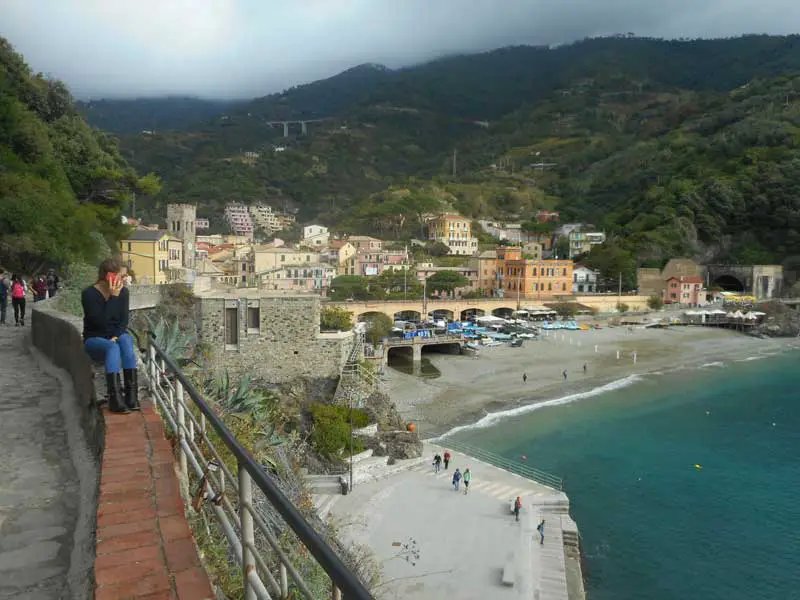
Monterosso al Mare, or simply Monterosso, has long been a port for fishing activities, and tuna caught off its coast has provided a third of the towns’ revenue for centuries until tourism took over as the major source of income. It’s the only village with a nice long span of beach right in town (the others either require a hike or are very small and/or rocky). The attractive medieval castle that is located on the seashore at Monterosso al Mare is called the Torre Aurora (Dawn Tower). It can be found at the junction of Monterosso’s Old Town and the New Town.
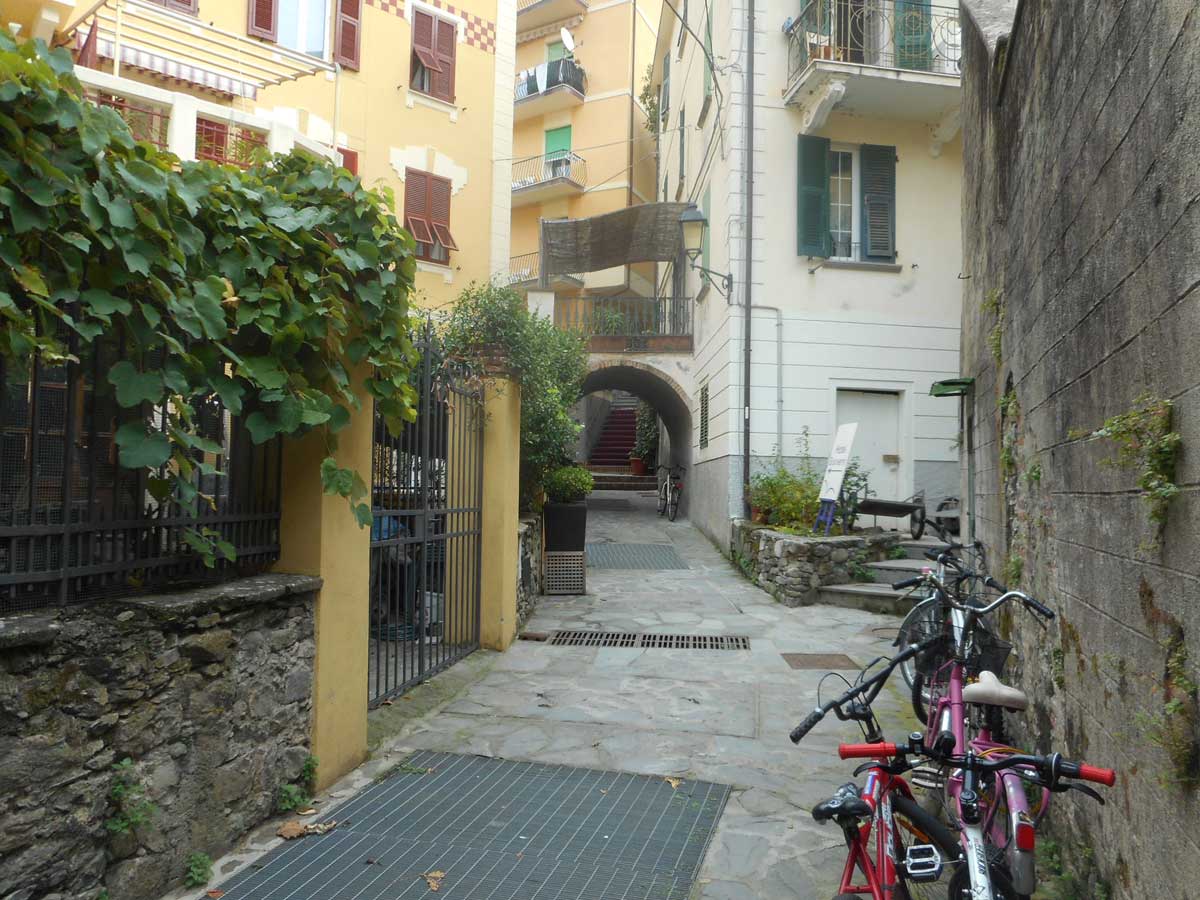
The “Old Town” in Monterosso al Mare is located east of the seaside castle. Many of Monterosso’s popular attractions can be found in this area including the cathedral, Garibaldi Square, the Monterosso Town Hall and a number of good restaurants and shops. The main square is called Piazza Garibaldi (Piazza al Garibaldi). This shaded square remains cool on hot days thanks to a number of large trees and its proximity to the sea.
Monterosso is the departure point for the spectacular 12 km Cinque Terre hiking trail. It is a gorgeous 12 km trail that runs along this section of the Italian Riviera. It connects the town of Monterosso al Mare at the north to the town of Riomaggiore at the south. The Cinque Terre trail passes through three other towns: Vernazza, Corniglia and Manarola.
Although 12 kilometers might be a long journey for very young or elderly hikers, visitors have the option of hiking short segments of the trail. Some segments take less than one hour to complete. Called Sentiero Azzurro in Italian, this ancient footpath has existed for centuries.
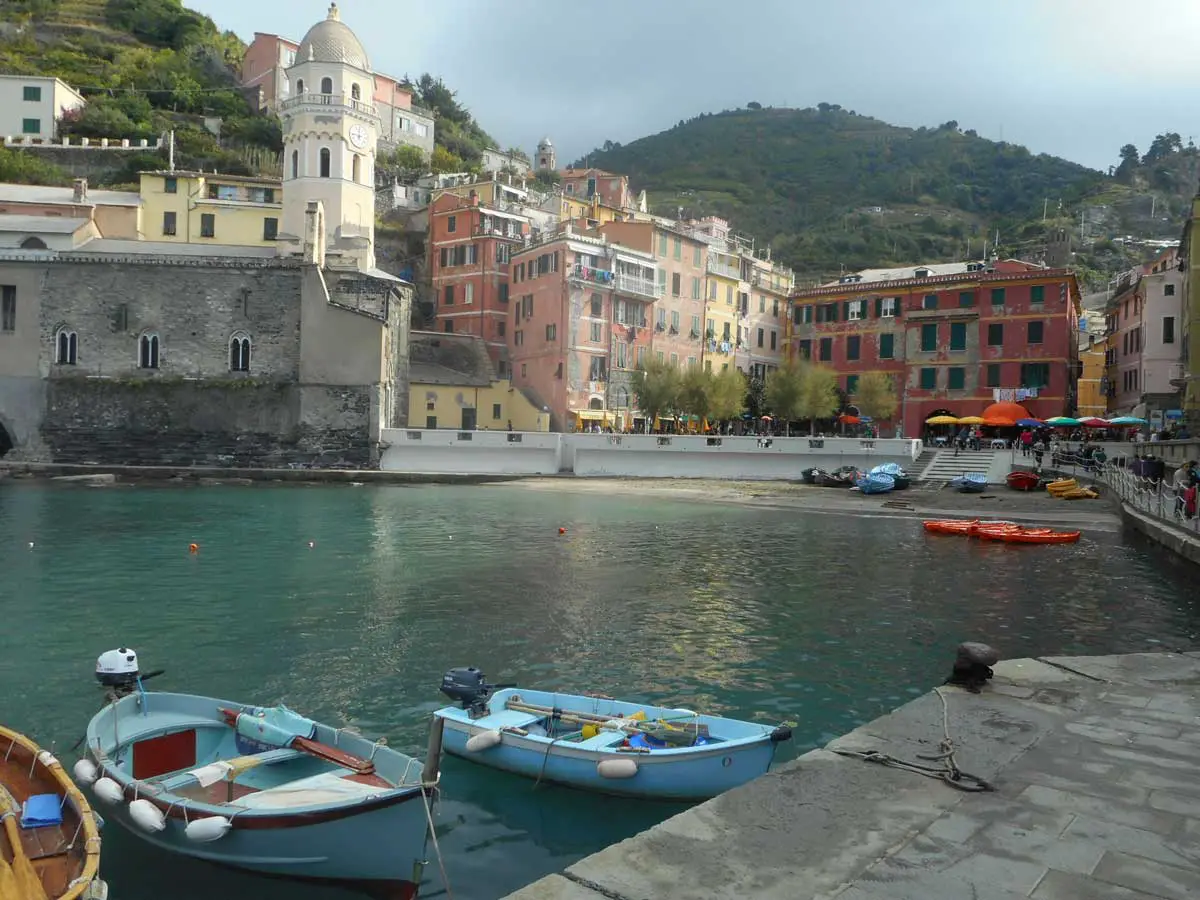
Vernazza
Monterosso and the next town, Vernazza, are the oldest towns of the Cinque Terre, their earliest mention being back in 1080, though Vernazza may well be much older than that, its name believed to be derived from the Roman word for “indigenous” or “local”, with Vernazza being Roman for “place of the locals”, something the Romans named places they visited and settled there. Both towns are built along streams which empty into the sea, and today flow beneath their main streets. Vernazza was badly damaged by floods in October 2011 but has been restored to its former glory. A stone tower on the cliffs is part of 13th century fortifications.
Vernazza has numerous fine restaurants at the head of the bay around which the town is built. The town has perhaps the most charming central square – It is right on the water. A ring of cafes and restaurants face the bay. Vernazza’s beach is off Piazza Marconi, within the protected harbour on the northwestern side. Unique for its east-facing entryway, Santa Margherita d’Antiochia church has a nave and two aisles, with an octagonal bell tower rising from the apse area, and is located in the town’s main square Piazza Marconi.
First records recognizing Vernazza as a fortified town date back to the year 1080. Referred to as an active maritime base of the Obertenghi, a family of Italian nobility, it was a likely point of departure for naval forces in defence of pirates. Doria Castle was built in the 15th century as a lookout tower to protect the village from pirates.
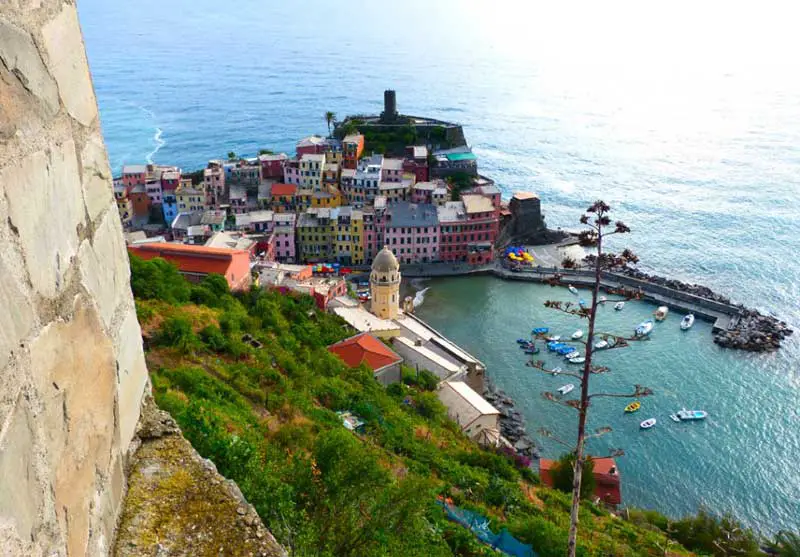
View of the village of Vernazza from Santuario di Nostra Signora di Reggio
The Santuario di Nostra Signora di Reggio is about an hour’s steep walk above Vernazza. The path that leads up to the sanctuary is punctuated with the Stations of the Cross. The surrounding property of the sanctuary contains a large shady open area, expansive views of the hillside vineyards and coast.
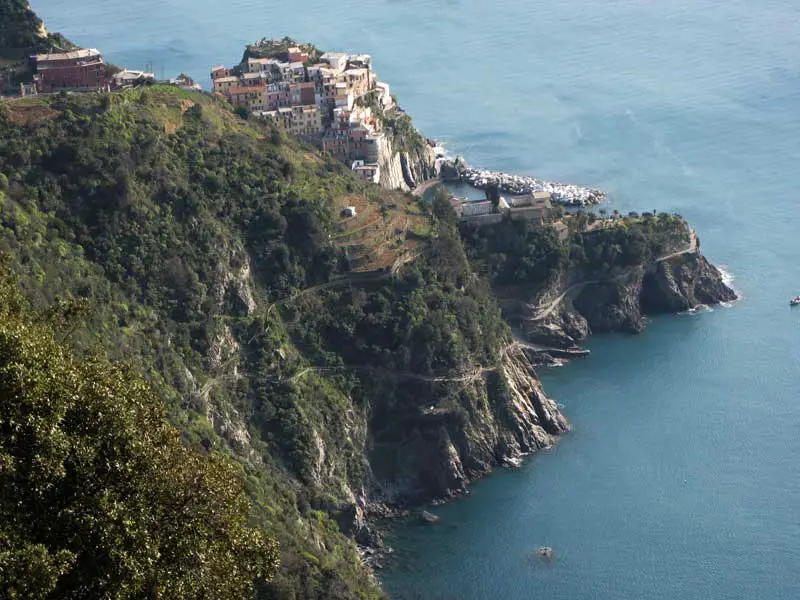
Corniglia
Corniglia is the only town not immediately on the water – it is on top of its cliff, and so no matter which direction you walk from requires a steep hike uphill. Being on top of the cliff and at the end of an uphill climb up thirty-three ramps and 377 steps from its railway station, Corniglia doesn’t attract as many day visitors are the other towns, so it is the quiestest of the towns, especially in the evenings when the hikers have all passed through.
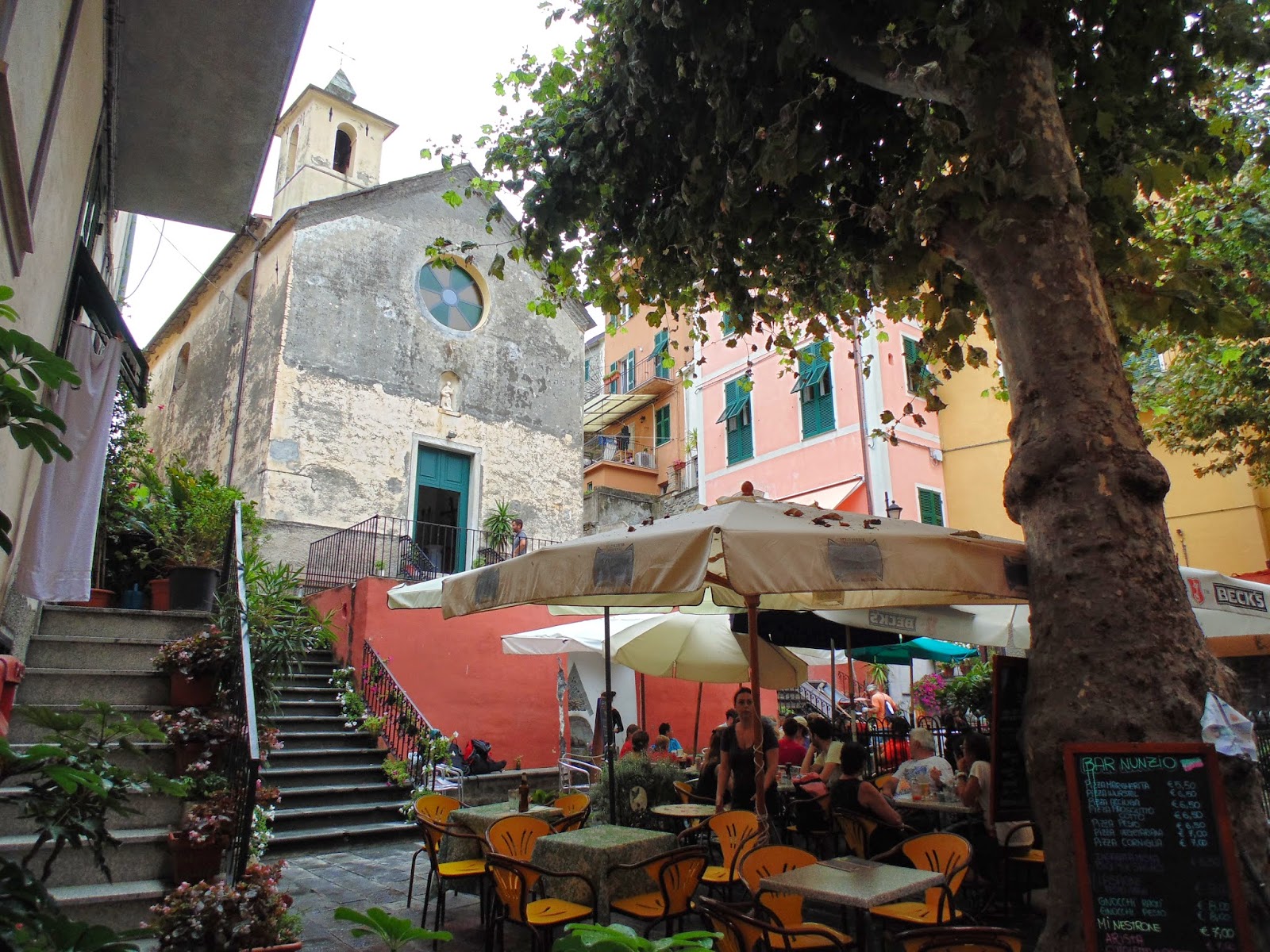
Corniglia is characterised by narrow roads and a terrace in the rock from which all other four Cinque Terre’s villages, two on one side and two on the other, can be seen. Documents dating from 1276-77 mention the existence of a castle. However, remains of the castle have yet to be discovered and the location of the castle grounds is unknown. The only ruins in Corniglia belong to Genoese fortifications, a stronghold on a cliff plunging into the sea, which dates back to approximately 1556.
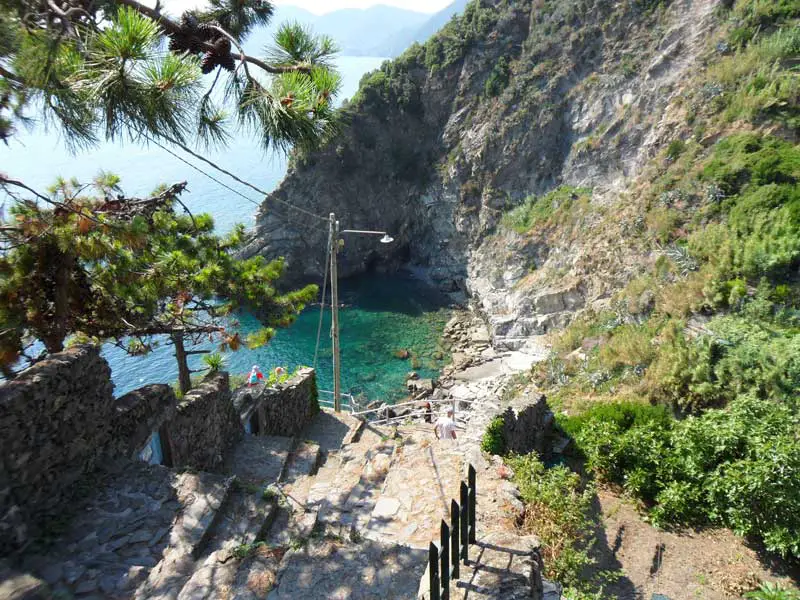
Corniglia also has a beautiful beach, Guvano, that you can reach walking along a disused railway tunnel not far from Ladarina, the famous staircase with 380 steps that connects the station are a with the village.
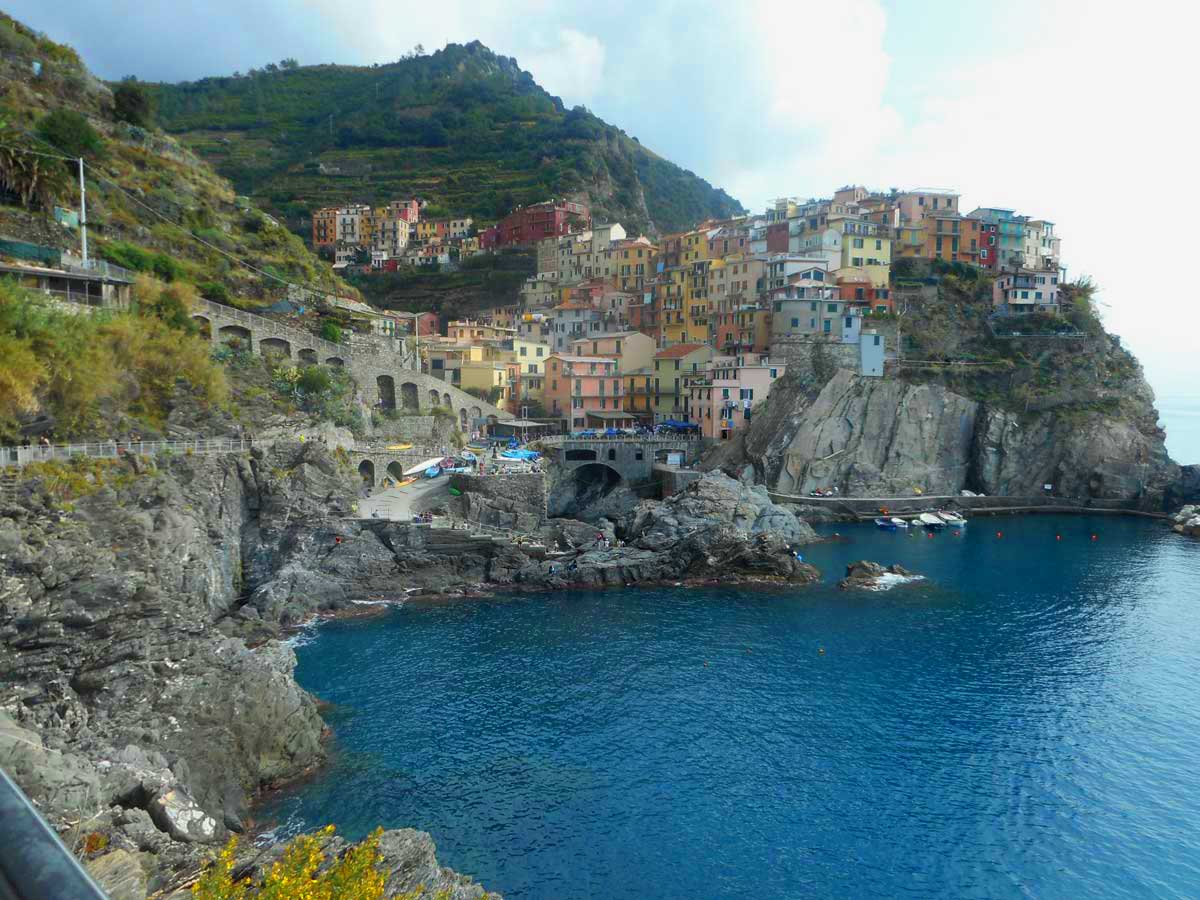
Manarola
Manarola feels a bit more rustic and less polished than its northern neighbors; for this reason some find it a bit more charming and less populated with tourists. Manarola is similar in size and layout to Riomaggiore, and was built on the banks of a stream. Pathways from the town lead up into the hillsides and the many terraces planted with grape vines. One path in particular, which starts behind the church, is easy and panoramic, offering spectacular views of the town and the coast within 15 minutes.
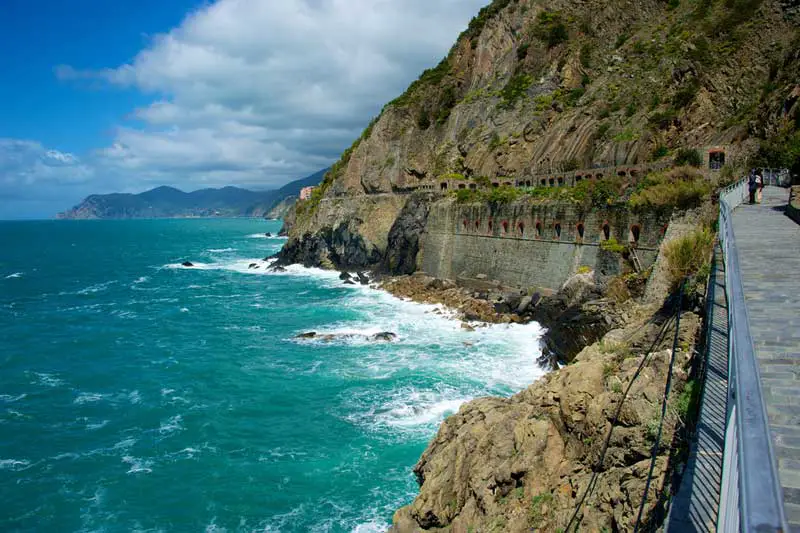
The part of the path between Manarola and Riomaggiore is the easiest. It is paved, so you can even make the trek with a baby stroller. The path is called the Via dell’Amore – the Road of Love. The coast here is steep and rugged and the path was built in the 1920s by volunteers from the two towns. Landsldes and rock falls are frequent and the trail is often closed when they are storms at sea or during bad weather.
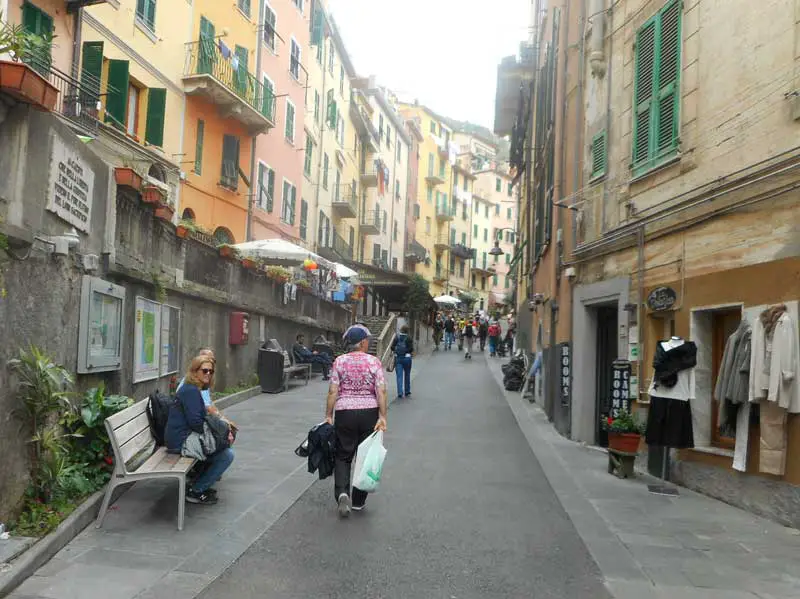
Riomaggiore
Riomaggiore is the most southerly of the towns and has been nicknamed Little Venice, as houses on either side of a stream which today flows under the main street were originally connected by bridges. It was the paintings of Riomaggiore by Telemaco Signorini who lived here at the end of the 19th century that introduced the outside world to this idyllic coastline and the five villages which Signorini called home.
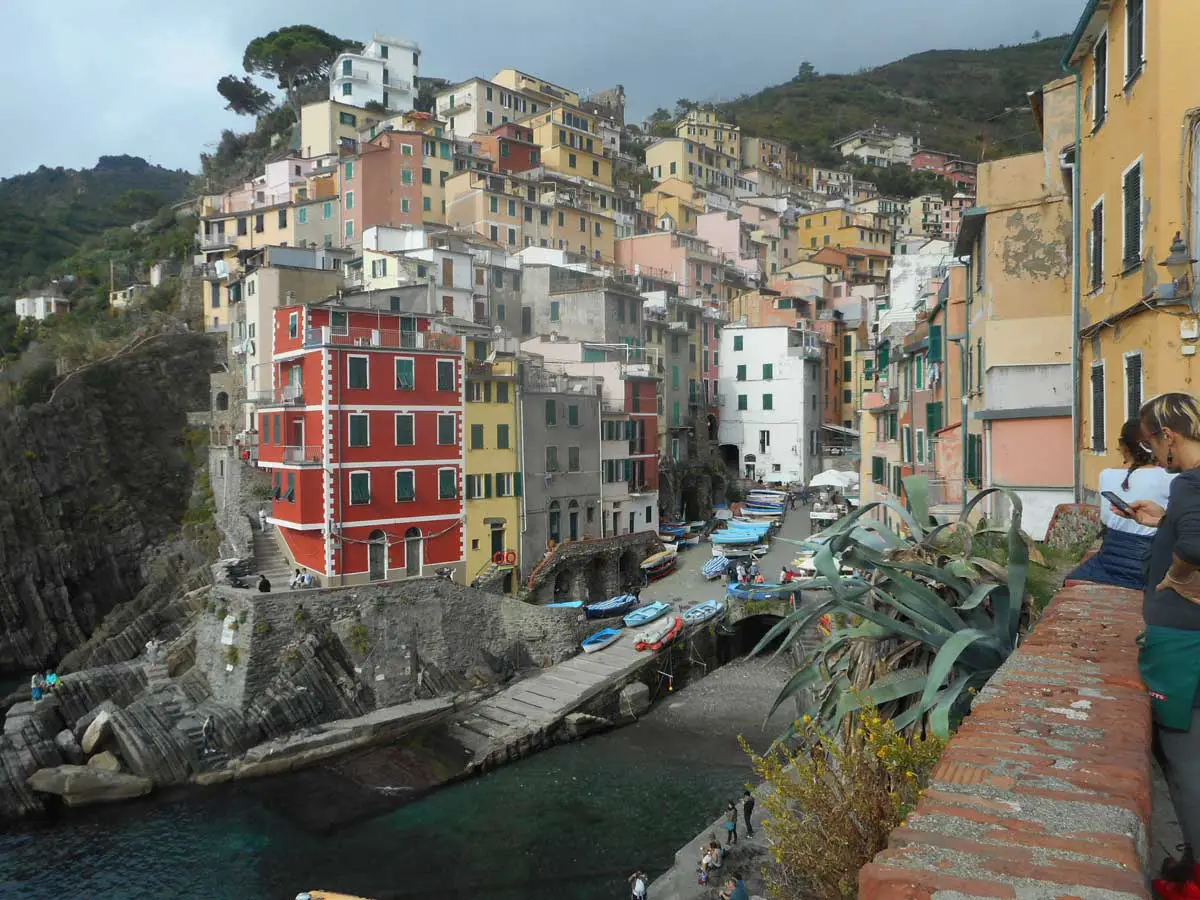
A visit to the marina is a must – the nets spead out to dry, the coloured fishing boats, the houses climbing the hillside painted in many lively colours make this one of the most fascinating areas in not only the town but the whole of the Cinque Terre. The Church of St John the Baptist had its origins in 1340 and sections of the present building date from that year.
A castle overlooks the town. It was built in its defence in 1260 by the Turcotti family, the lords of the town. It was a part of a larger system of defence of which little remains today.
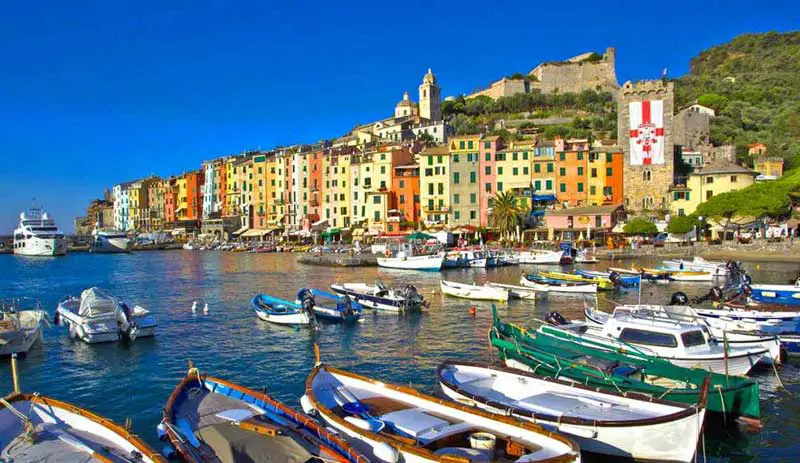
Porto Venere
Porto Venere is a town located on the Ligurian coast to the south of Cinque Terre not far from the city of La Spezias. It comprises the three villages of Fezzano, Le Grazie and Porto Venere, and the three islands of Palmaria, Tino and Tinetto. In 1997 Porto Venere and the villages of Cinque Terre were designated by UNESCO as a World Heritage Site.
The village lies at the southern end of a peninsula, which, breaking away from the jagged coastline of the Riviera di Levante, forming the western tip of the Gulf of La Spezia. At the end of this peninsula are the three small islands. Porto Venere survives mainly on the tourist trade, catering and activities related to tourist accommodation.
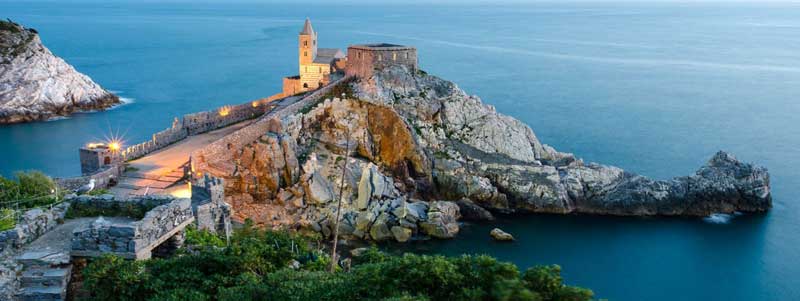
The church of Saint Peter juts out from a rock spur onto the Gulf of Poets. Built in 1198 over what was left of an ancient pagan temple, Saint Peter’s was probably completed between 1256 and 1277, when its distinctive black-and-white striped body was erected. Every year, on August 17, people here celebrate the White Madonna – lighting up the slope of the church’s promontory with hundreds of burning torches.
Andrea Doria Castle dominates the landscape of Portovenere and overlooks the magical Poet’s Gulf. It is an imposing structure with closed sloping walls made of local stone and stands as an outstanding example of the Genoa military architecture. The Castle was built by the Genoese in 1161 and during the centuries its structure has undergone improvements both on the outside as well as on the inside arrangement.
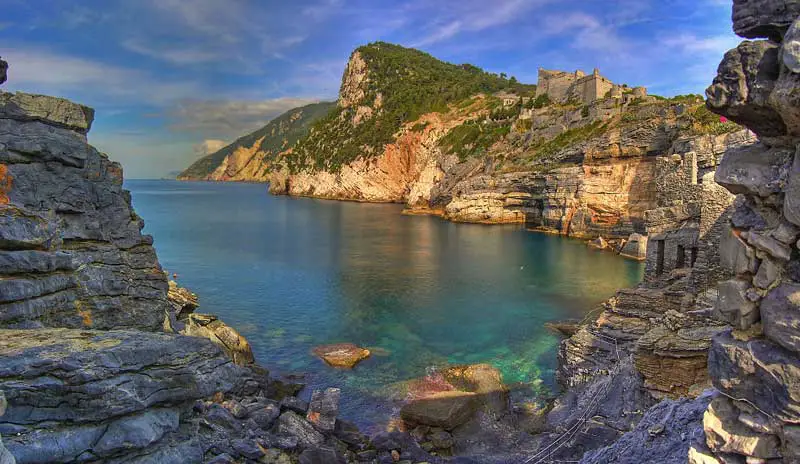
Byron Cave
The Regional Natural Park in Portovenere offers a unique landscape with its high coasts, caves and vegetation that permeates the atmosphere in any season with the changing shades of colour. Among the natural places in the Porto Venere is the famous Byron Sea Cave (named after the English poet George Gordon Byron in this place that drew inspiration and meditation for his literary works), Azzurra (semi-submerged) and Tinetto Caves; the cavity of the Doves and the wall of Tino, the shoal of Dante and Small and Big creeks.
Design by W3layouts
